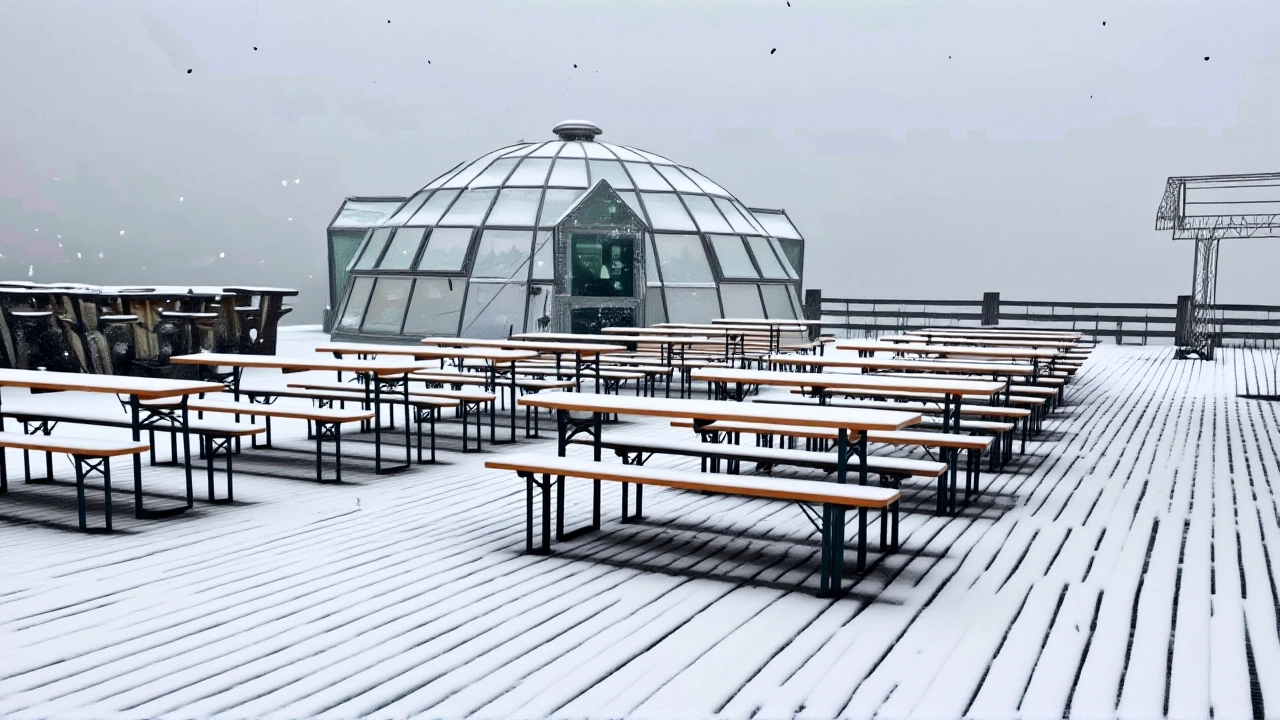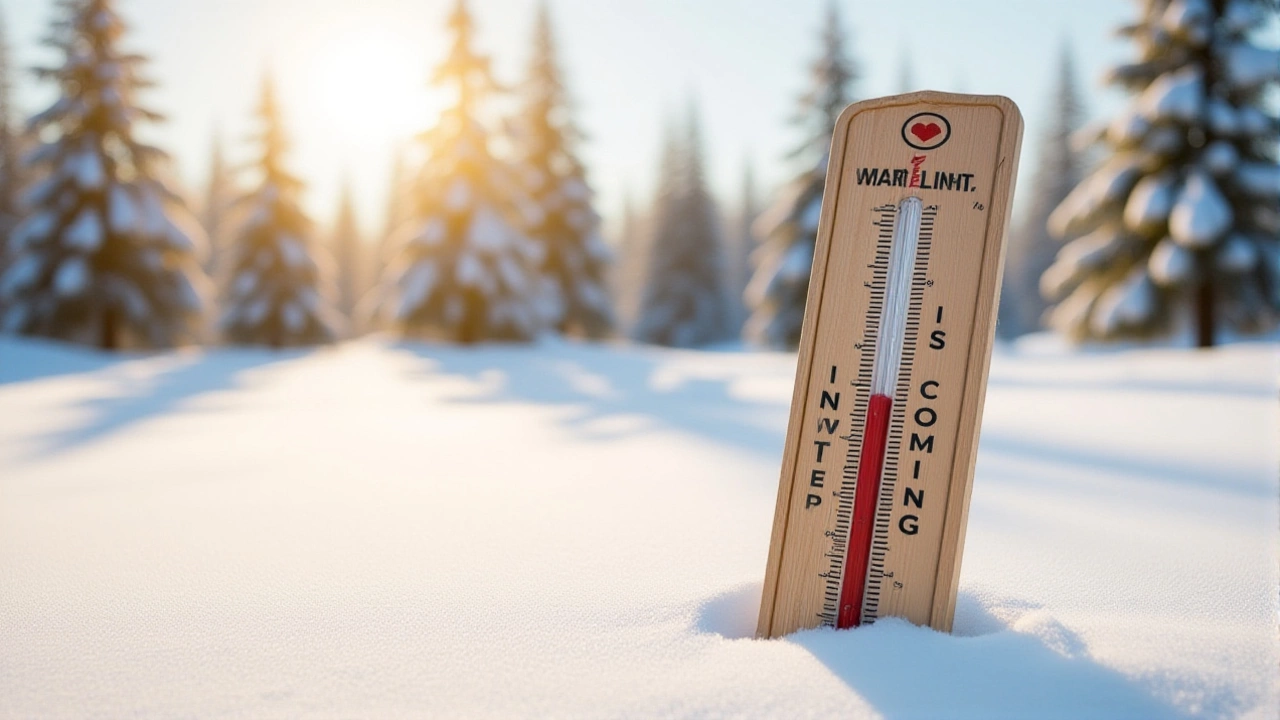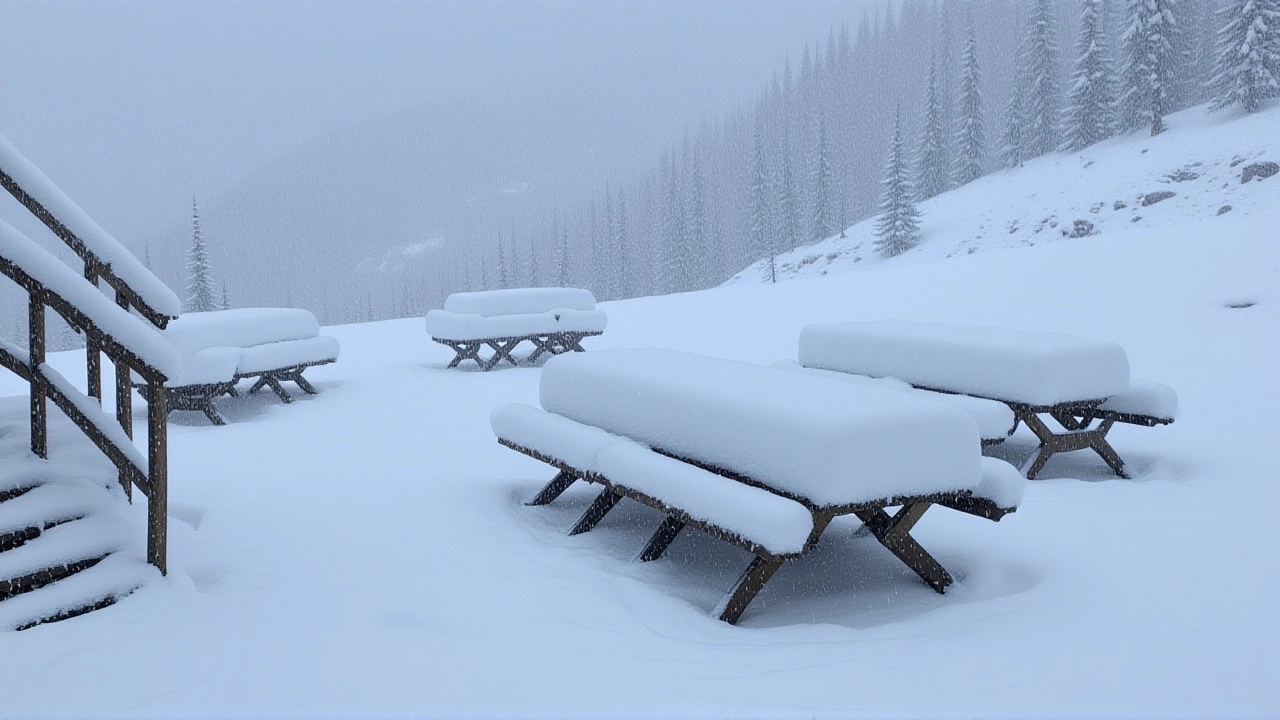When European Alps dressed in white at the end of September 2025, nobody saw it coming. The Stelvio National Park in northern Italy recorded its first snow on September 29, a scene captured by the Copernicus Sentinel‑2 satellites. That early blanket set off a chain reaction, from thrilled Swiss ski towns to power outages in Serbia and Bosnia. For anyone who enjoys a good powder day – or worries about climate signals – this snap‑early winter matters.
Why the Alps are snow‑capped so early
Mountains love cold air, but the timing is usually a late‑fall affair. This year, a dip in the jet stream dragged Arctic air southwards, colliding with moist Mediterranean breezes. The result? Snow grains fell on peaks above 2,500 m on September 28, and by the 30th the high passes were slick with fresh powder.
Scientists point to the Copernicus program’s Sentinel‑1 radar as the workhorse confirming coverage. The satellite data show a 22 % increase in snow‑covered area compared with the same period in 2024, a jump that experts call “unusual but not unprecedented”.
- First snow in Stelvio National Park: September 29, 2025
- Snow‑cover rise: +22 % versus 2024
- Highest snowfall measured: 0.57 m at Alpine peaks
- Glacier loss last year: 3 % of total ice mass
- Power outages reported: >1,200 households in Serbia
Resort reactions: From excitement to logistics
Swiss towns such as Zermatt and Saas‑Fee welcomed the surprise. Zermatt posted a base depth of 0–120 cm across its 14 km of runs, while Saas‑Fee boasted a 0‑145 cm base, enough to keep glacier skiing alive while most European slopes were still on summer grass.
Even the “autumn terrain park” at Mürren’s Schilthorn opened, using snow stockpiled from the previous season. In Italy, the Passo Stelvio ski area reported a modest 10‑90 cm base, and Val Senales showed a thin 0‑40 cm crust – enough for trainee runs and a few adventurous locals.
French resorts shared Instagram reels of fresh powder, but higher passes like Tignes and Val Thorens kept their public openings shut, citing safety and the need to protect lingering snow structures.
Snowstorm in the Balkans: A different kind of disruption
While Alpine skiers were adjusting lift tickets, the Balkans faced a harsher reality. From October 2‑4, a cold front slammed into southeastern Europe, dumping more than half a meter of snow on the higher reaches of Bosnia and Serbia.
At the Jahorina ski center outside Sarajevo, visitors like Sandra Majstorovic found themselves swapping flip‑flops for winter boots. “We came here in flip‑flops and now we need boots and jackets,” she laughed, half‑shivering.
In Serbia, the storm knocked down power lines and snapped water pipes. Aleksandar Mitrovic, head of the Ivanjica municipality, told reporters, “We have a number of areas without electricity because of broken trees and branches that fell on power lines.” The municipalities of Medvedja and Crna Trava lost both drinking water and phone service, prompting emergency measures and the deployment of mobile generators.
Roads around Sarajevo were closed on October 4, and authorities reminded drivers that winter tires become mandatory from November 1. Local police reported a 15 % rise in traffic incidents on the snowy routes.

What the early snow says about climate trends
Snowfall itself isn’t a clear‑cut climate indicator, but the juxtaposition with glacier loss raises eyebrows. The GLAMOS (Glacier Monitoring in the Swiss Alps) released a report showing the Alps lost 3 % of their ice volume in the past 12 months – the fourth‑largest reduction on record.
Matthias Huss, GLAMOS director, summed it up: “It’s really a lot,” he said, noting that a dry winter in the northeast and a scorching June amplified melt rates. Early snow can temporarily refill lower basins, yet the overall mass balance remains negative.
Researchers argue that such erratic patterns – early snow followed by rapid melt – could destabilize mountain ecosystems, altering river flows that millions downstream depend on for drinking water and hydroelectric power.
Forecast: Will the Alpine winter linger?
Models from the European Centre for Medium‑Range Weather Forecasts (ECMWF) suggest a cooler week ahead, with scattered snow showers above 2,500 m on Thursday and Friday. Winds are expected to gust up to 50 km/h over the high passes, potentially clearing the lower valleys by the weekend.
Higher resorts in Austria (Hintertux), Switzerland (Saas‑Fee), and France (Tignes) could see another dusting of fresh powder, keeping their winter‑sport calendars on track. However, back‑country teams are warning of avalanche risks as freshly fallen snow sits on a thin, icy crust.
For the Balkans, the next few days look calmer, but emergency crews remain on standby. Water utilities are repairing damaged mains, and the Serbian government has promised subsidies for households that lost power.

Why this matters to everyday people
If you’re a skier, the early season means you can book a trip now and still enjoy decent runs before the crowds hit. If you live in a mountain valley, the sudden snowfall can strain local infrastructure – think blocked roads, power cuts, and delayed school openings.
And on a larger scale, the mixed signals of early snow and glacier retreat remind policymakers that climate adaptation isn’t just about long‑term trends; it’s also about handling the surprises that pop up in a warming world.
Frequently Asked Questions
How does the early snowfall affect ski resort operations?
Resorts like Zermatt and Saas‑Fee can open more lifts earlier than scheduled, attracting early‑season tourists and boosting local revenue. However, thin snow layers also require artificial grooming and increased avalanche monitoring, which can raise operational costs.
What caused the sudden snowstorm in Bosnia and Serbia?
A deep dip in the polar jet stream funneled cold Arctic air into the Balkans, meeting moist air from the Adriatic. The resulting convergence produced heavy snowfall from October 2‑4, catching the region off‑guard and overwhelming local snow‑removal capacities.
Are early snow events linked to climate change?
Scientists say early snow alone isn’t a direct climate signal, but when it coincides with rapid glacier melt – like the 3 % loss reported by GLAMOS – it highlights the increasing volatility of alpine weather patterns.
What measures are authorities taking after the Balkan power outages?
Serbian municipalities have declared a state of emergency, deployed mobile generators, and accelerated repairs on damaged power lines. In Bosnia, road crews are clearing blocked passes, and the government has urged drivers to switch to winter tires ahead of the November 1 deadline.
Will the early snow improve water supplies later in the year?
If the snow survives the spring melt, it can replenish reservoirs that feed major rivers like the Danube and Po. However, warmer summers could accelerate melt rates, potentially offsetting any early‑season gain.
 Oct, 5 2025
Oct, 5 2025
